Watering strawberries during flowering and fruiting
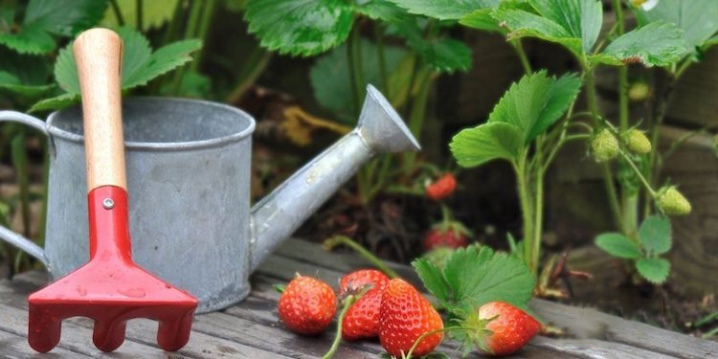
Large, juicy, fragrant strawberries are the pride of any gardener. But to get a really high-quality harvest, you need to try. Proper care is the key to success, it includes many activities, including weeding, feeding, pruning. And watering in the complex of all other activities is very important. Therefore, it is worth figuring out how strawberries are watered during flowering and fruiting, how to water the rest of the time.


How often to water?
To get sweet juicy strawberries, she needs to provide quality watering. You cannot pay attention to this issue from time to time. The watering regime depends on many factors that should be considered. You cannot give one recipe, which will indicate how many times to water garden strawberries. It depends on things like:
- climatic conditions of the region;
- season;
- the location of the beds;
- soil composition;
- strawberry variety;
- the period of plant development.
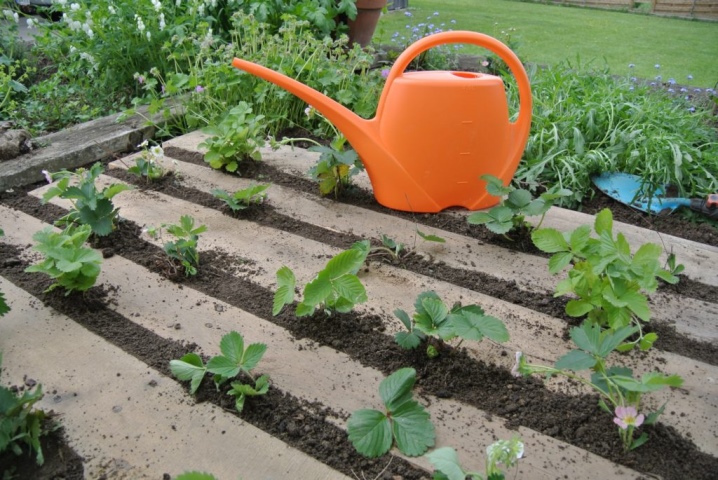
When planting bushes in the spring, you need to immediately provide full watering. In this case, you should monitor the soil and see that it is sufficiently moist, but not with an excess. This is necessary for the plant to take root successfully.
Before planting, the soil must be well moistened. After the bushes are planted according to all the rules, they need to be watered. Further, the first time it is worth looking at what the weather is like.
Plants cannot be poured, but dry soil can also cause the strawberries to die. Therefore, it is better to check how moist the soil is in a simple way. You need to take a handful of earth and grind it between your fingers. If lumps of earth remain on your fingers, then the earth is wet. If the hands are kept clean, the soil is completely dry and needs moisture. Such control is necessary only for the first week, while the plant takes root, then you can navigate by the weather.
If it is cloudy and the sun comes up sometimes, watering is enough once every 4-5 days. Provided that the weather is hot, watering should be done every 3 days. After rain, of course, no watering is needed. But it happens that the temperature is so high and the drought lasts so long that watering is necessary every day. Especially if flowers appear or berries ripen at this time. Extremely dry and hot summers are especially common in the southern regions.

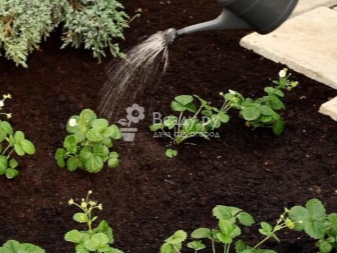
It should be noted that strawberries need regular watering both during the appearance of flowers, and at the time of berry formation, and when the harvest ripens. And then, when the harvest has already been harvested. Until the onset of frost, strawberries need watering, but not so abundant. It is a mistake to think that if the berries are harvested, you can forget about the strawberries.
During the fall planting, garden strawberries also need moisture. But mostly autumn plantings are typical for the southern regions. The bushes manage to take root before the cold weather, and subsequently the berry winters well, and then in the summer gives the first harvest. In cold regions, spring planting is preferable. Their advantage is that the ground is saturated with moisture after the snow melts, and you should not particularly focus on water procedures.
Watering also depends on what kind of soil is on the site. If the plant is provided with good drainage, and the soil is loose and more sandy, the water does not stay in it for a long time. Therefore, watering is needed more often. For example, on very hot summer days, this is every other day. Provided that the soil contains more clay, which means that it is dense and heavy, the water in it stays much longer.And accordingly, watering as often as in light soil is not needed. That is, even in the heat, a break of 2-3 days will not be critical.
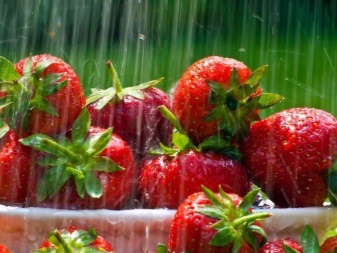
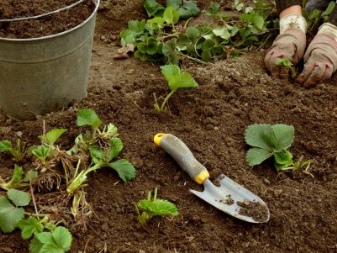
Another nuance is the location of the beds. If they are exposed to the sun all day, the soil will heat up more and moisture will evaporate faster. When partly shade is present, the ground stays moist longer. An addition like mulch also plays a role. Due to it, moisture in the soil lingers longer. The same can be said for agrofibre, which protects the beds from the sun's rays and retains moisture. In addition, there are different strawberry beds - in the open field, in a greenhouse, high, vertical, in boxes, flowerpots. It is clear that in traditional beds, moisture lasts longer. In high and vertical ones, water leaves quickly, which means that you need to more strictly control the moisture level.
In a word, if you collect several factors together, then you have to decide on your own how much water strawberries need. The gardener must take into account all these nuances when thinking over his individual watering regime.

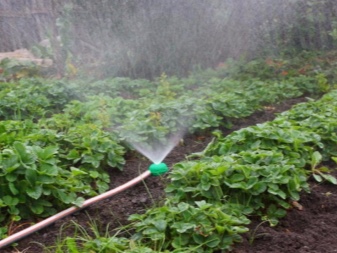
What kind of water should you use?
Here the opinions of gardeners differ. Some believe that water from a well is quite suitable, others water it exclusively with settled water, and still others prefer to save rainwater. Therefore, there is no single correct solution, all three options are permissible. You may have to experiment a little and observe the condition of the plants to find the ideal watering scenario.
Ideally, the water should be clean, without any chemical impurities, settled and warm. Such water is considered the most correct, comfortable, it does not cause stress to the plant. Cold water is believed to be more likely to cause root rot.
It should be borne in mind that watering with ice water in the heat is especially dangerous. This is stress for the plant, to the extent that it can shed flowers or ovaries.
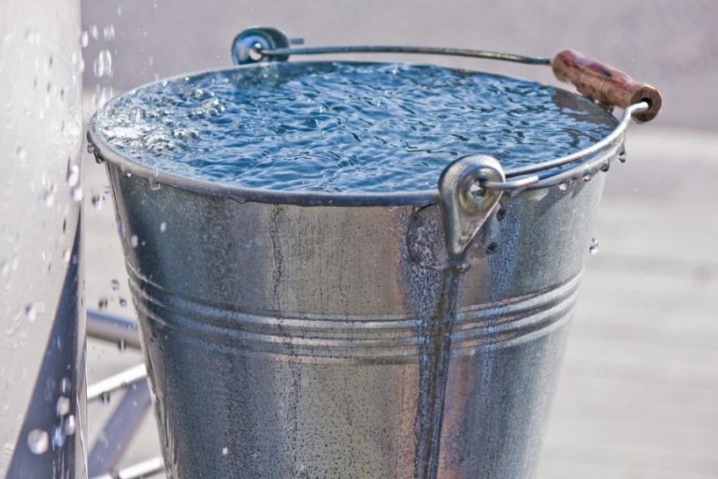
Rainwater in barrels on site is also considered a viable option. It heats up in the sun. It is only necessary to take into account that any settled water must be clean, and not reach such an extent that foreign objects and an unpleasant odor will appear in it. Therefore, water barrels should be covered with a lid, leaving a small space for air. In order to water the beds, you will have to draw water from containers and walk with a watering can in the beds.
Many people prefer to water the strawberries with a hose, because it is simple and convenient, despite the fact that there is cold water. In addition, it is always possible to adjust the water pressure as needed and select the appropriate mode. However, it is more convenient to control the amount of water poured onto the garden bed if you irrigate the plants from containers in which the displacement is indicated. When using a hose with cold water, of course, it will be possible to harvest, but experts say that watering with warm, settled water improves the taste of the berry and increases its quantity.
As for the certain inconvenience of watering from barrels, here you can also solve the problem by attaching a tap with a hose to the barrel. Thus, there will always be warm, clean water on the site and there will be no need to walk with a heavy watering can in the beds.
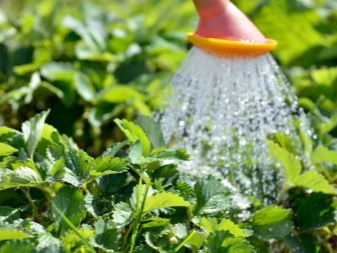

Watering features
It is very important not only to pour out the required amount of clean water, but also to water it correctly, since any mistakes can lead to wilting of the plant and even its death. Strawberries are watered early in the morning or late at night when the power of the sun is weakening. In no case should you water the plants in the heat. And if in the spring, when the sun is not yet baking so much, morning watering can be carried out at ten o'clock, and evening watering at five, then in summer these hours are shifted. And it is best to finish the morning watering before eight in the morning, and start the evening after seven or eight. Sprinkling is used only before the flowers appear. Further, it is better to gently water at the root, and if spraying with solutions from diseases and pests is needed, this must be done very carefully.
Both flowering and ripening of berries require a lot of water. All the time while the berries are ripening, strawberries need to be given increased attention. When the crop is harvested, the frequency and intensity of watering is gradually reduced. But all the same, you should not allow such a situation when the ground is completely dry. So you can lose some of the bushes.

Since strawberries are a moisture-loving culture, and it must be watered carefully, many gardeners equip a drip irrigation system, believing that it is better to devote time to this once, but then its savings will be obvious. And the plant benefits from such watering more. In the greenhouse, the humidity is higher, which is fraught with the occurrence of various fungal diseases. Therefore, during water procedures, it is necessary to open windows and ventilate the room and irrigate in the morning.
But the most dangerous thing, of course, is to overflow the plant. It is almost impossible to save him in such a situation, because in this case the root begins to rot.
If the strawberries have not been watered for a long time and the leaves have wilted, you can fix the situation. One has only to moisturize it enough. This should be done in the early morning or evening. Water should be poured in small portions. First, one part, after an hour - another, then wait another hour - and water again. So the plant will take moisture in small portions and revive.
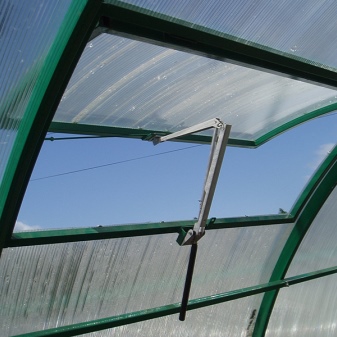
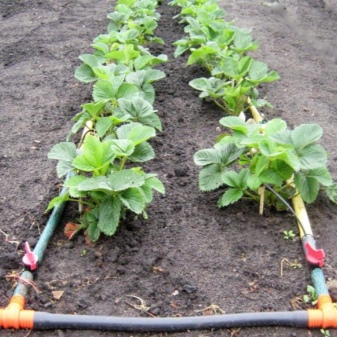
During flowering
When in the spring with the first warm days, garden strawberries begin to develop actively and build up green mass, they can be watered using your favorite method - using a watering can or a hose. If water gets on the leaves, it will not harm the plant in any way. You can also spray with various solutions with beneficial ingredients that prevent the appearance of pests and diseases. But after the first flowers began to appear, you need to proceed very carefully. They are very delicate, so a strong jet of water can easily knock down the flowers, and then there is a risk of simply being left without a crop.
Besides, at this time, intensive watering is needed, because the plant is developing, gaining strength. Fertilization and watering are both important. Loosening of the soil, which is also called dry irrigation, should not be neglected. It is necessary that the air, like water, penetrates to the roots. When watered, water is poured under the bush, gently lifting the leaves and flowers, trying to get the water into the ground, but not disturb the flowers.
Flowering strawberries are best watered using a drip system. One square meter during flowering should have about 15 liters of water, each bush should receive at least 0.5 liters.
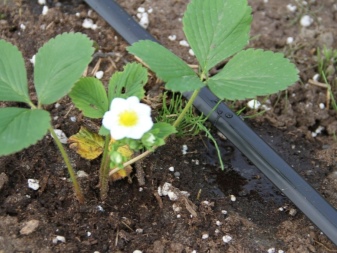
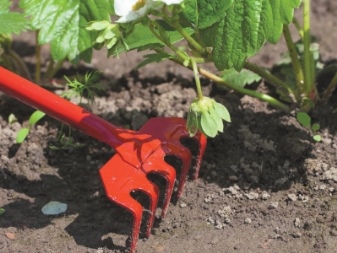
During fruiting
When the strawberry ripens and an ovary of fruits appears, the intensity of watering is not reduced, and the principle remains the same: water is poured under the bush, without touching the upper part of the plant. At the same time, excess leaves are carefully removed in order to ensure access of the sun to the berry and direct all the forces of the plant to the fruits, and not the leaves. Do not skip watering to keep the strawberries soft and juicy. When watering, do not direct a strong stream under the root. At the same time, the earth can be splashed and fall on the berries. It's good when there is mulch or agrofibre under the strawberries. Then the ripe berry always remains clean, and there is no risk that it will come into contact with the ground and begin to rot.
When garden strawberries bear fruit, the berries ripen gradually, and this period lasts from two weeks to one and a half months, it all depends on the variety of strawberries. Before watering the beds, you need to collect the berries that are already ripe, and only then water them. When the fruits ripen, 30 liters of water should be poured per square meter. That is, you need to pour a liter of water under each bush. Of course, this is an average figure, you need to focus on the weather, soil and other factors.
You cannot water the strawberries with cold water at this time, it is better to work with a watering can and take care of the bushes. It is very important to observe the water balance at this time. The soil should not be dry, but in no case should it be poured over. The berry can just rot.
It is very important to loosen the soil during the ripening process and not neglect this procedure.
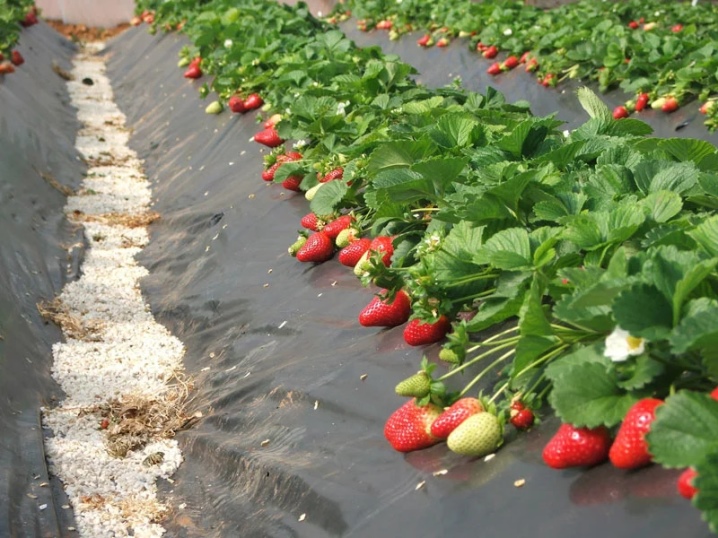
Besides, if there was no mulch before, you should still place it in the beds. So the berry will be cleaner, and the moisture will last longer. Sawdust is good in this case. They will not only retain moisture, but also reduce weed growth. This is also very important, since it is not enough just to provide the bushes with water. Weeding and loosening are required. These procedures are directly related to watering. Loosening helps moisture to stay in the ground longer. Weeding removes weeds, which can take up moisture and nutrients from strawberries and take up extra space.
In no case should you water the berry in the heat, especially irrigate it. There is a risk of getting tasteless fruits or even partially losing the crop. If you correctly carry out all the watering procedures, choose the optimal regime for your site, then the berry will be tasty and beautiful, and the harvest will be plentiful.
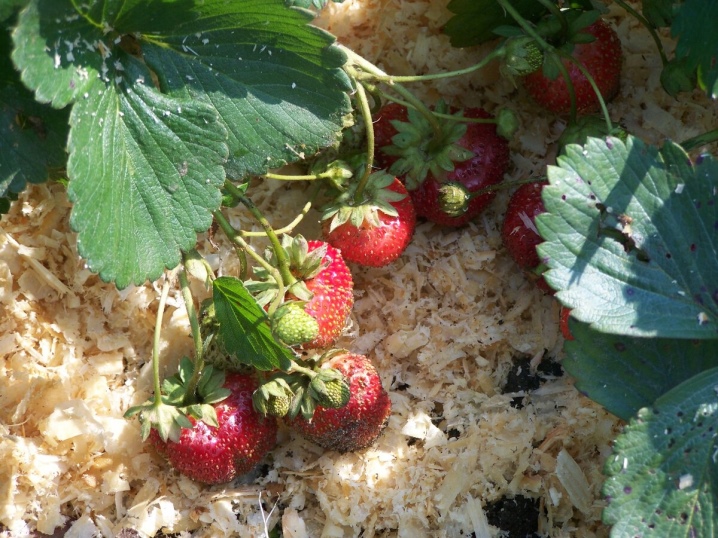








The comment was sent successfully.